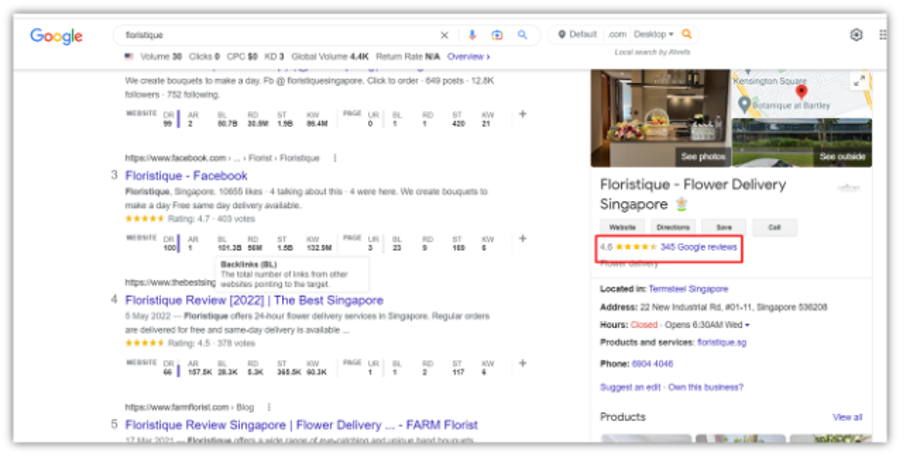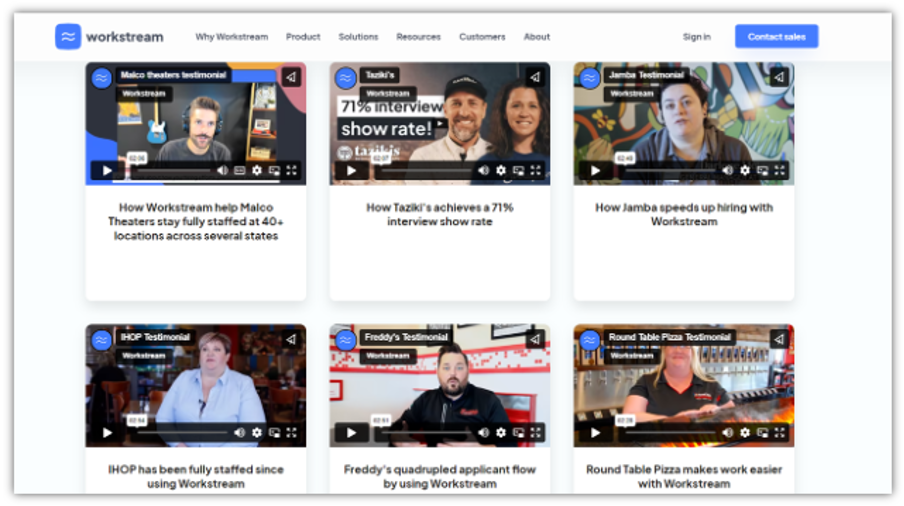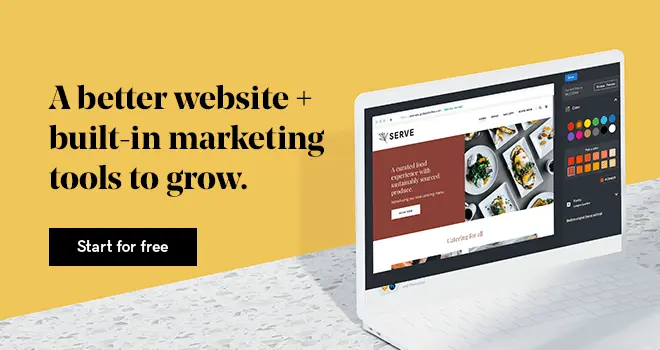If you think having a Facebook page is enough for your business to promote your product online, think again. It is barely the minimum to gain new customers.
These days, you need to be on multiple social media platforms, have an SEO-optimized website, work with influencers and PR agencies, a full-suite marketing strategy, and much more. But for many e-commerce and online business owners, time and budget are huge obstacles in running a full-suite marketing campaign to grow their online presence. How are you going to compete with the likes of Amazon when you want to make a new product launch?
Looking for hyper-focused solutions on how you can promote your business and products online? You’ve come to the right place. In this article, I will highlight key marketing channels for your business to engage in and grow online.
Let’s delve in, shall we?
Best strategies for marketing and promoting a product online
1)Pick the right content management system (CMS)
A CMS is a software application allowing users to create, edit, and publish digital content like landing pages and blog posts.
Some of their other features include the ability to manage users and permissions and track changes to content. CMSes can be used to manage a wide range of content types, including text, images, audio, and video. Examples of CMSes used for e-commerce include Wordpress (with WooCommerce plugin installed), Opencart, and Magento.
Factors to consider when picking a CMS
- Ease of use: Easy for users to navigate and understand, with a user-friendly interface and clear instructions for setting up and managing the online store.
- Product management: Offer robust product management features. This includes the ability to add, edit, and delete products, create and manage categories, set up and manage variations such as size and color.
- Payment gateway integration: Offer integration with a range of payment gateways, allowing users to easily process and accept payments from customers.
- Shipping and tax options: Options for setting up shipping rates and handling taxes allows users to easily manage these aspects of the e-commerce process.
- SEO support: Don't create a website to establish an online presence if you’re not investing in SEO. Your CMS should provide content modules to upload your page title, meta description, and label your header tags. These are clear signals to Google as to what your content is about and should not be neglected.
- Google Analytics (GA) and Google Tag Manager (GTM) compatibility: The CMS should allow you to insert GA and GTM tracking codes in the backend to track and analyze conversion events. These include product view, add to cart, remove from cart, and the actual transaction. These data points are then pumped into GA to create an incredibly granular enhanced e-commerce report.
- Enhanced e-commerce tracking support: The enhanced e-commerce report in GA provides you with specific information on E-Commerce conversion events that occur on your site. This gives you clear insights as to how your site is performing. At this point, only a Wordpress CMS with WooCommerce installed provides enhanced E-Commerce tracking functionality. All other CMSes require a developer to craft codes that ‘push’ e-commerce conversion events into GA reports.
Picking the right CMS go a long way to making your online product promotion successful.
2) Have a well-designed website
A well-designed website is important for an e-commerce store. This is because it can greatly impact the user experience and the overall success of the online store.
A well-designed website helps create a professional and trustworthy image for the store.
Here are some specific reasons why a well-designed website is important for an e-commerce store:
- User experience: A web designer is able to create a site that’s easy to navigate, with clear and intuitive links and categories. This makes it easier for users to find what they are looking for. Hence, it increases chances that they will make a purchase.
- Trust and credibility: A professional and visually appealing website can help to build trust and credibility with visitors. This is especially important for an e-commerce store, as customers need to trust that their personal and financial information will be secure when making a purchase.
- Conversion rates: Well-designed websites help increase conversion rates by making it easy for visitors to complete the purchase process. This includes features such as a clear call to action, an easy-to-use checkout process, and visually appealing product pages.
If you lack experience and help in this area, you can consider using GoDaddy’s online store builder to create your e-commerce website from scratch.
3) Publish search-optimized and helpful content on your site
The importance of content writing for SEO cannot be understated.
The selection of appropriate keywords and the creation of good content form the very foundation of any SEO strategy. After all, search engines want to return the best search engine results to their users. This encourages continued usage of their platforms.
Helpful and relevant content is an absolute must to perform well for SEO
Google has made it very clear that they place a very strong emphasis on good content. Case in point. They released their August 2022 Helpful Content Update that favors sites that post content relevant and helpful to their readers. This affected many sites adversely, as you can see in the screenshot below.

A December 2022 version of the update just started rolling out. So if you’re still not creating content with both search engines and users in mind, you have to start now.
Optimizing your content for search engines helps Google match your content to the search intent of certain keywords. For example, optimizing a blog post’s structure and content allows the algorithm to recognize it as a competitor for, say, the “best food blogs in singapore” keyword.
For an e-commerce store, this will help increase the odds of your home page and product category pages being recognized as a legitimate page and increase the odds of it ranking for your target keywords.
If you currently don’t have an in-house team working on written content, you can consider engaging a content writing agency to help you with this. Many of them charge very affordable rates of about $0.10 or less per word. That said, the onus is on you to filter out the good agencies from the bad ones.
4) Don’t neglect the technical SEO aspects of your site
Content is just one of the pillars of SEO. The technical side of SEO is another pillar that your shouldn’t neglect. Technical SEO site audits help ensure that your site is optimized for Google to crawl and index your site.
Are there commands in your site’s robots.txt folder that prevents Google from crawling your site? Is there an HTML meta tag (this is just a single line code for the non-technical readers) preventing Google from storing your pages in its index? Are there HTML tags that signal to Google that your pages are their own canonical versions? If you are running a multi-country and multi-language site, do you have specific HTML tags in place to instruct Google to return the correct version to users in the target countries?
This is important (especially large e-commerce sites) where many product pages have very similar copy. Think single pages automatically created using the CMS for each color and size of the same product. Someone with technical SEO expertise is able to quickly identify content duplication issues and insert the relevant canonical tags to tell Google which pages should be deemed as the original copy.
Being able to address crawling and indexing issues ensures that your site stands a higher chance of being found, crawled, indexed, and ranked by the search algorithms. This, of course, goes a long way toward helping you grow your brand awareness and organic site traffic.
If you need help with SEO, you can try out GoDaddy’s all-in-one SEO services where you get a dedicated SEO team to support you with all your SEO needs.
5) Guest blogging on other sites
Guest blogging is the process in which you write for other bloggers and publications to promote your business. It has several key benefits for site owners.
[blockquote] Guest blogging is a great way to make yourself known to readers of other publications. [/blockquote]
Just by being mentioned on another site helps a lot with growing your brand awareness. When audiences of other sites you are writing for reads about your brand, more people will learn about your business.
Doing so also earns you a backlink from the sites and bloggers you wrote for. From an SEO perspective, backlinks are a strong indicator that your site is an authority on the subject you are writing about, and is there for a credible resource.
Google uses the number and quality of backlinks pointing to your site as a ranking factor. So the more links you earn by guest blogging, the better your site ranks for your target keywords. With that, more people are going to learn about your products online.
Another reason for guest blogging is the potential of your guest posts to drive traffic to your site. You would want your guest post to be optimized for search and ranks for keywords. With that, readers of that blog post may click into your web page via backlinks to your site inserted on that article. This, in turn, drives even more traffic to your site.
6) Press Release
Press releases are a type of written communication used to announce news or information to the media and the public.
In the context of e-commerce, press releases can be an effective way to promote your business and products online and reach a larger audience. Here are some ways in which press releases can help grow your e-commerce business and promote your product online:
- Increase brand visibility to a wider audience by publishing press releases on popular websites or through distribution services. This can be useful if the press release is picked up by major news outlets or industry publications. Some examples of Singaporean publications people often pay to have press releases written include The Smart Local and Vulcan Post.
- Establish your brand as an authority in the industry by announcing news or information about your business or products through a press release. This can help build trust and credibility with potential customers.
- Build backlinks and generate traffic. Just like guest blogging, press releases that the media pick up helps to build backlinks and direct traffic to your website.
To write an effective press release, start by identifying the newsworthy aspect of your business or product. This could be the launch of a new product, a partnership or collaboration, or a new service you are offering.
Next, write a headline that clearly communicates the main point of the press release. The body of the press release should provide more detail about the news or information you are announcing. Always include quotes from relevant individuals and any relevant statistics or data.
7) Affiliate Programs
An affiliate program is a marketing program allowing affiliates (publishers) to earn a commission by promoting a company's products or services.
Affiliates typically earn a commission when they refer a customer to the company's website and the customer makes a purchase.
They are often used by e-commerce businesses as a way to increase sales and reach a wider audience.
There are various types of affiliate programs, including pay-per-click (PPC) programs, pay-per-sale (PPS) programs, and pay-per-lead (PPL) programs.
In a PPC program, affiliates earn a commission for each click on the affiliate link. Meanwhile, those in a PPS program earn a commission for each sale made through the affiliate link. But for a PPL program, affiliates earn a commission for each lead generated through the affiliate link, such as when a customer fills out a form or subscribes to a newsletter.
Affiliate programs can be a useful way for online businesses to increase sales and reach a wider audience. They can also be a good source of income for affiliates. By promoting products they are interested in or have knowledge about, these folks can earn commissions.
It's important for businesses to carefully select affiliates and monitor their performance. This ensures that they are promoting the company's products in a responsible and effective manner.
7) Customer reviews
Customer reviews can be a powerful tool for growing an e-commerce business and promoting products online. You can find these on several different platforms, the most common being a business’s Google Business Profile (GBP).

Some industries have specific platforms just for people to read reviews. For instance, potential customers of software-as-a-service (SaaS) businesses rely heavily on software review sites like G2 and Capterra for honest reviews from actual users.
Customer reviews provide social proof. This, in turn, can increase their confidence in the product and make them more likely to buy it. In fact, 93% of buyers read online reviews before actually making a purchase.
It may also come as a surprise that customer reviews can actually improve your local keyword rankings. According to the Google official guide on improving local rankings:

Written reviews aside, verbal reviews in the form of word-of-mouth (WOM) also help grow the brand awareness of your business and products online.
Customer reviews can help potential customers identify your products’ unique selling points and provide valuable insights into what your customers like and dislike about your products.
8) Email marketing
Email marketing is a form of digital marketing involving sending promotional or informative messages to a group of people via email.
The goal of email marketing is to promote products or services, build customer loyalty, or engage with an audience in a targeted and personalized way.
There are many different types of emails that can be used for email marketing. This includes newsletters, promotional offers, abandoned cart emails, and customer service emails. Email marketing campaigns can be targeted to specific segments of an email list based on factors such as location, interests, and previous purchasing behavior.
Email marketing can be an effective way to reach and engage with an audience, as it allows businesses to send personalized and targeted messages to their customers and prospects. It can also be a cost-effective marketing strategy, as it requires minimal resources to create and send emails.
However, it is important to follow best practices for email marketing, including obtaining permission to send emails, providing value to the recipient, and following privacy laws such as the General Data Protection Regulation (GDPR) and the California Consumer Privacy Act (CCPA).
If you are currently not using a business email address, pick one of GoDaddy’s business email plan and start reaching out to your target audience today.
9) Google Ads
Google Ads (formerly known as Google AdWords) is a PPC advertising platform that allows businesses to engage in media planning and buying to display ads in the Google search results, as well as on other websites that partner with Google to show ads.
Businesses that use Google Ads create campaigns in which they set a budget, choose keywords, and write ad copy. When users search for a keyword that the business has chosen, their ad may appear in the search results. Google charges the business a fee when a user clicks on the ad.
Google Ads can be a useful tool for growing an e-commerce business because it allows businesses to reach potential customers at the moment they are searching for products or services related to their business. It can also be targeted to specific geographic locations and demographics, making it an effective way to reach a specific audience.
10) Social media marketing
Social media marketing is the process of using social media platforms to promote a product, service, or brand. It involves creating and sharing content on social media, as well as interacting with customers and potential customers to build relationships and trust. It is a quintessential part of your content marketing strategy.
There are many different social media platforms that businesses can use for social media marketing, including Facebook, Instagram, Twitter, LinkedIn, and Pinterest. Each platform has its own unique features and audience, so it's important to choose the right platform(s) for your business.
Some common tactics used in social media marketing include:
- Sharing engaging and relevant content: This can include blog posts, articles, videos, infographics, and other types of media that provide value to your followers and showcase your products or services.
- Running paid social media ads: Many social media platforms offer paid advertising options that allow businesses to target specific audiences and reach a larger number of people.
- Engaging with followers: This can include responding to comments and messages, asking for feedback, and sharing user-generated content.
- Using hashtags and collaborating with influencers: Hashtags and influencer partnerships can help increase the reach of your content and introduce your products or services to a new audience.
11) Pinterest marketing
Pinterest deserves a section on its own as unlike the others mentioned above, it is one of the lesser-known social media platforms. It is a platform that allows users to discover and save creative ideas, such as home decor, fashion, and recipes. Businesses use it as a marketing tool to promote their products and services to a large and engaged audience.
[blockquote] Create pins strategically to direct traffic from Pinterest to your site. [/blockquote]
There are several benefits to using Pinterest for marketing. For example, Pinterest has a large and highly engaged user base, with over 400 million monthly active users. It also allows you to showcase and promote your product online effectively as it is a highly visual platform.
In addition, Pinterest has a number of features that can help businesses reach and engage with their target audiences, such as promoted pins, Pinterest Analytics, and Pinterest Ads.
Pinterest marketing involves creating and sharing content (called "pins") on Pinterest. These pins showcase your products, services, and brand in an engaging and visually appealing way. Pins that are created by businesses can be used to promote products, services, and brand awareness. Users can save your pins and organize them into collections called "boards."
Businesses can create visually appealing pins that feature their products and include links to their e-commerce store or website. This is a great way for growing brand awareness and driving organic traffic to their site.
12) Influencer marketing
Influencer marketing is a type of marketing in which businesses collaborate with individuals who have a strong online presence and influence over a specific niche or industry. These individuals, known as influencers, use their social media platforms, blogs, and other online channels to promote products and services to their followers.

The main way influencer marketing can help promote your products online is by generating WOM and growing your brand awareness. Just look at the number of people talking about Shopee after Cristiano Ronaldo’s arguably cringeworthy ad.
Apart from that, influencers are also engaged to run other types of campaigns such as giveaways and lucky draws where they can direct their followers to your site and convert them into leads.
13) Free webinars
A webinar is a type of online event that is typically used to present educational or informative content to a large audience. Webinars are usually conducted live, but they can also be recorded and watched at a later time. Because webinars require potential attendees to sign up with contact details, it is a great lead generation tactic.
They are a great channel for demonstrating your products and showcasing them to a large audience. You can show attendees how your products work and the benefits they offer. This can help to build interest and drive sales. It is a marketing tool frequently used by SaaS companies for lead generation.
For example, US-based recruitment software company Workstream frequently uses webinars to show how franchisees were able to streamline their hiring processes using their software.

And in doing so, their webinars also helped them build credibility and authority in the hiring industry as they show that they are aware of their users’ pain points.
You don’t really have to complicate this whole online business thing to promote your product online
And that’s it! I hope this article has provided you with a starting point on how you can promote your product online.
Running and promoting an online business is hard, yes. But it doesn’t have to be overly complicated.
You don’t need fancy and advanced SEO techniques to rank well. Just the basics. You don’t need New York Times-esque editorial vocabulary in your ad copy. Just get your message across. And you definitely don’t need to engage the biggest B2B influencers to be a guest on your webinars. Just reach out to your existing customers.
That said, I understand that running a business definitely gets overwhelming. That’s why GoDaddy came up with its Marketing Suite to centralize all your marketing activity in one place. From SEO to email marketing and social media, this platform has you covered. Reach out to GoDaddy today and receive support for your marketing needs.







